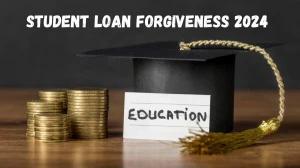
Subsidized vs Unsubsidized Loans: Which One You Should Borrow?
Subsidized loans are for undergraduates with financial need, featuring government-covered interest during specific periods, while unsubsidized loans cater to both undergraduates and graduates, with interest accruing from disbursement.
Published Aug 01, 2023 | Updated Dec 08, 2023 | 📖 5 min read
Subsidized Vs Unsubsidized Loans
Subsidized and unsubsidized loans serve as essential financial tools for students pursuing higher education. Subsidized loans, tailored for undergraduates with demonstrated financial need, offer a unique advantage by not accumulating interest during enrollment or deferment periods. This means that students won't face the burden of additional interest charges while actively attending school, providing a financial reprieve for those in need.
On the other hand, unsubsidized loans are available to both undergraduate and graduate students without considering financial need. The eligibility is determined by the cost of attendance minus other financial aid received. Unlike subsidized loans, interest begins accruing from the moment the unsubsidized loan is disbursed.
This interest can be paid off during school or allowed to accumulate and be capitalized, leading to a higher overall repayment amount. Therefore, borrowers need to carefully weigh their financial situation and preferences to decide whether a subsidized or unsubsidized loan better aligns with their educational and financial goals.
What is the Difference Between Subsidized Vs Unsubsidized Loans?
Subsidized and unsubsidized loans are two distinct financial aid options designed to support students pursuing higher education. While subsidized loans cater exclusively to undergraduates with demonstrated financial need, unsubsidized loans extend their accessibility to both undergraduate and graduate students without the requirement of financial need. Understanding the nuances between these loan types is crucial for students navigating the complexities of funding their education.
|
Feature |
Subsidized Loans |
Unsubsidized Loans |
|
Eligibility |
Only available to undergraduates |
Available to both undergraduates and graduates |
|
Basis for Award |
Based on financial need |
No financial need required |
|
Interest Accrual |
Doesn't accrue until leaving school |
Accrues from the time of disbursement |
|
Government's Interest Help |
Government pays interest while student is enrolled |
Government doesn't help with interest |
|
Loan Limits |
Lower loan limits |
Higher loan limits |
What is the Interest Rate on Subsidized and Unsubsidized Loans?
The interest rates on federal student loans, distinguishing between subsidized and unsubsidized loans, play a pivotal role in shaping the financial landscape for borrowers. For the period spanning from July 1, 2023, to June 30, 2024, the interest rate for direct subsidized loans, catering primarily to undergraduates with financial need, stands at 5.50%.
In contrast, the interest rate for direct unsubsidized loans, available to both undergraduate and graduate students regardless of financial need, is slightly higher at 7.05%. It's noteworthy that the federal government provides an interest subsidy on direct subsidized loans during specific periods, such as enrollment and the initial six months post-graduation, but this subsidy does not extend to loans in forbearance, where interest continues to accumulate.
MarketsHost offers a comprehensive and user-friendly guide to Loans, providing you with the insights necessary to embark on a successful financial journey.
What are Subsidized Loans?
Subsidized loans represent a form of federal student financial aid tailored specifically for undergraduates with demonstrated financial need. These loans, provided through the Direct Subsidized Loan program, offer a distinctive advantage: the federal government covers the interest on the loan while the student is enrolled at least half-time in school, during the initial six months after leaving school, and in periods of deferment.
This interest subsidy provides a financial reprieve for borrowers, as interest does not accrue during these specified periods, making subsidized loans a cost-effective option for eligible undergraduates seeking to fund their education.
A subsidized loan example involves an undergraduate student, such as Emily, with demonstrated financial need. Let's say Emily qualifies for a $5,000 Direct Subsidized Loan. The unique feature of this loan is that the federal government covers the accruing interest on the $5,000 during Emily's enrollment, the six-month post-graduation grace period, and periods of deferment.
This interest subsidy lessens Emily's financial burden by preventing interest accumulation during these crucial phases of her academic journey, making the subsidized loan a cost-effective funding option.
What are Unsubsidized Loans?
Unsubsidized loans are a form of federal student aid available to both undergraduate and graduate students, irrespective of financial need. Unlike subsidized loans, the distinguishing characteristic of unsubsidized loans is that interest begins accruing from the moment the loan is disbursed. Borrowers are responsible for paying the interest during all periods, including enrollment and deferment, as the government does not provide an interest subsidy.
An example of an unsubsidized loan involves a graduate student named Alex receiving a $10,000 Direct Unsubsidized Loan for the academic year. The key distinction is that interest starts accruing from the disbursement of the loan, and Alex is responsible for covering the interest during enrollment and deferment periods.
Unlike subsidized loans, there's no government subsidy, so upon graduation, Alex will need to repay the initial $10,000 along with the accumulated interest, making unsubsidized loans less financially favorable.
What Are the Pros and Cons of Subsidized and Unsubsidized Loans?
Navigating the landscape of student loans involves weighing the advantages and disadvantages of subsidized and unsubsidized options. Subsidized loans offer the benefit of government-covered interest during specific periods, particularly for undergraduates with financial need. In contrast, unsubsidized loans provide flexibility for both undergraduate and graduate students but come with the responsibility of accruing interest from the loan's disbursement.
Pros of Subsidized and Unsubsidized Loans
- The government pays the interest on subsidized loans while the borrower is enrolled in school, for the first six months after graduation, and during deferment periods.
- Unsubsidized loans can be used for graduate school, offering financial support for advanced education.
- There is no requirement to demonstrate financial need for unsubsidized loans, providing broader access to financial assistance.
Cons of Subsidized and Unsubsidized Loans
- Eligibility for subsidized loans is contingent on demonstrating financial need, potentially limiting access for students with more secure financial backgrounds.
- Limited to undergraduate studies, restricting access for graduate students who may require financial support.
- Interest on unsubsidized loans begins accruing from the time of disbursement, increasing the overall cost of the loan.
- No Interest Assistance : The government does not cover the interest accrued on unsubsidized loans during enrollment, grace periods, or deferment, placing the responsibility entirely on the borrower.
Subsidized Vs Unsubsidized Loans - FAQs
1. What is the main difference between subsidized and unsubsidized loans?
The main difference between subsidized and unsubsidized loans is that the government covers the interest on subsidized loans while the borrower is in school and during deferment periods.
2. Who is eligible for subsidized loans?
Subsidized loans are available only to undergraduate students who demonstrate financial need through the Free Application for Federal Student Aid (FAFSA) process.
3. Are there any income limits for subsidized loans?
No, there are no income limits for subsidized loans. Eligibility is determined solely based on the student's demonstrated financial need.
4. Can both undergraduate and graduate students apply for unsubsidized loans?
Yes, both undergraduate and graduate students can apply for unsubsidized loans. Unlike subsidized loans, financial need is not a requirement for unsubsidized loan eligibility.
5. Are there borrowing limits for subsidized and unsubsidized loans?
Yes, both types of loans have borrowing limits, which vary depending on the student's academic level and dependency status. Subsidized loan limits are generally lower than unsubsidized loan limits.




